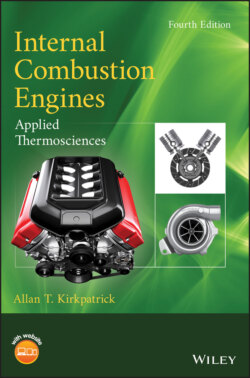Читать книгу Internal Combustion Engines - Allan T. Kirkpatrick - Страница 9
Preface
ОглавлениеThis fourth edition builds upon the foundation established by the three previous editions (1986, 1999, 2014) of this internal combustion engines textbook. For over thirty years, these editions have documented the continuing development of the internal combustion engine and the increased use of digital computation for analysis and design of engines. The editions have demonstrated the application of the principles of thermodynamics, fluid mechanics, and heat transfer to internal combustion engines, and reflected the changing balance between engineering analysis and numerical computation in improving our understanding of internal combustion engine performance. However, a note of caution should be sounded. As the capability of computers increase, there can be a temptation to rely exclusively on numerical computation. Engineering insight is also required. It is a sense of ‘a feel for the answer’, and is developed through engineering analysis and modeling.
The major focus of this fourth edition has been incorporating a time variable, i.e., engine rpm, into the engine analysis. The content additions include chemical equilibrium, chemical kinetics of reacting fuel‐air mixtures, incorporation of valve events into an energy release model, diesel spray penetration and evaporation, analysis of compressor and turbine fluid flow, expanded coverage of alternative fuels, piston ring and crankshaft bearing friction, heat transfer, gaseous emissions, soot, and exhaust gas analysis. The chapter organization remains the same as that of the third edition. The homework problems have increased in number and topics covered.
Since it is a standard in most engineering colleges and in industry, the programming software MATLAB® has been retained for the examples and homework problems, and listings of all computer codes are given in the Appendix. The computer codes have been expanded to allow comparison of valve timing and flow, friction and heat transfer models. There are now 26 programs included in the fourth edition, up from 17 programs in the third edition. Digital copies of the computer programs are also available from the author (allan@engr.colostate.edu) and the John Wiley web site.
The text is designed for a one‐semester course in internal combustion engines at the senior undergraduate or beginning graduate level. At Colorado State University, this text is used for a single term course in internal combustion engines. The course meets for a lecture two times per week and a recitation/laboratory once a week, for a term of fifteen weeks.
